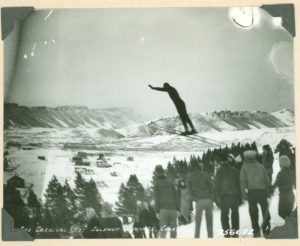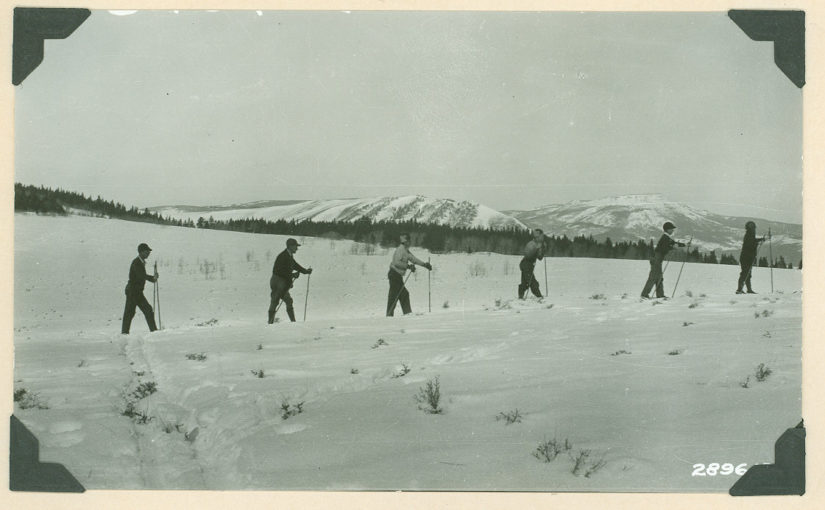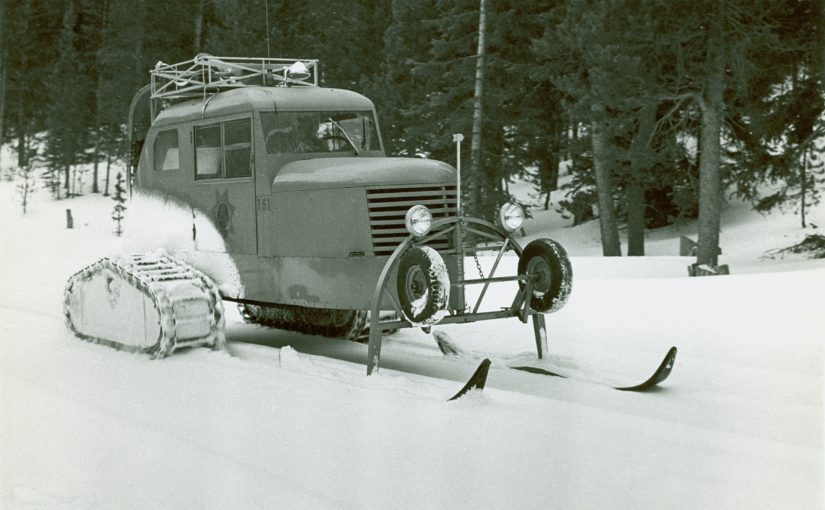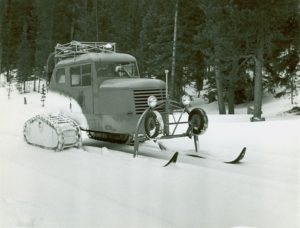
The earliest skis in Colorado were long, wooden ones called Norwegian Snowshoes, which were impossible to turn. And so, skiers didn’t turn for the longest time; I mean, they just went straight downhill.
Folks also used the skis for ski jumping, which was the extreme sport of the day in many parts of the state, starting in 1911 in Hot Sulphur Springs, home of the earliest Winter Carnivals in Colorado. The town also had a newspaper—and a newspaper editor with a sense of humor.
He wrote an account of one wild ride downhill—fictionalized if not pure fiction—which appeared in The Middle Park Times on January 30, 1914 with the headline, “Judge Kennedy’s Wild Ride.” You can read the entire story in Lost Ski Areas of Colorado’s Front Range and Northern Mountains. Here’s a little taste of it:
There are two rides in our nation’s history that are sacredly popular. One is “Paul Revere’s ride” and the other is “Washington’s boat ride across the Delaware” on that memorable Christmas night. Thus far, our nation’s historians have not taken cognizance of a third ride. But it happened this way. Last Sunday afternoon, every able-bodied man in town was called into service to erect the tower on the summit of the hill at the head of the ski course. Most of the men on the hill had skis on and it was suggested that they coast down the hill. Among others who were on skis was Judge Kennedy of the county court. Charley Free and Ed Chatfield suggested that the Judge coast down the hill. “I’m game,” said the Judge. Charley got the toes of the skis straight in the ski trail, while Ed attended the heels. Everybody in town had at least one eye on that hill. Finally Charley shouted, “All aboard! Let ‘er go!” Chatty yelled, “All ready, skiddo!” Zip—and the chief dignitary of the county court was on his way at a terrific and suffocating rate of speed…
Miners in the southern part of Colorado and ranchers in most of the state used Norwegian snowshoes to get around in winter. You can read about them in Lost Ski Areas of Colorado’s Southern and Central Mountains.
In Irwin, near Crested Butte, miners started sharing their skiing prowess early on. “About 1886 we had a ski club that attracted much attention all over the country. We gave exhibitions on the steep hillside just south of town. We gave the fastest runners first second and third prizes or real worth usually gold stick pins made to order. Had folks from Gunnison and other towns such as Montrose, Delta, Grand Junction, Salida and Denver come to the exhibitions at the Buttes…”


